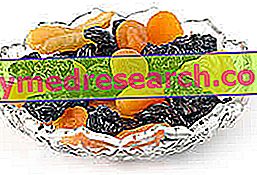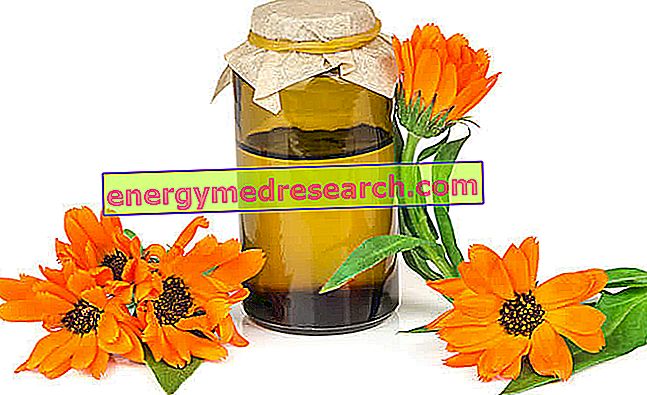Generality
The non-oily dried fruit is a group of CONSERVED foods, therefore processed-artifacts, based on fresh fruit deprived of its free water (Activity Water - AW).
Non-oily dried fruit does NOT include achenes and oilseeds (eg walnuts, hazelnuts, almonds, pine nuts, etc.), instead belonging to the category of dried fruit proper.
Non-oily nuts include two large categories:
- Dehydrated / dried non-oily dried fruit
- Candied non-oily dried fruit
Dehydrated / dried non-oily dried fruit

They belong to the dehydrated / preserved non-oily dried fruit: dried apricot, dried pineapple, dried banana, dried chestnut, dried cherry, dried date, dried fig, dried kiwi, dried mango, dried apple, dried melon, dried blueberry, dried coconut, dried papaya, dried mango, dry pear, dried peach, dried plum, dried grapes.
The abatement of the AW from percentages of 80-90% up to 30% determines a significant increase in the shelf life, clearly reducing the bacterial action on the substrate; however, it has no equally satisfying effects on fungal growth (however slowed but not as much as the previous one) and on oxidation. Often the dehydrated / dried non-oily dried fruit (especially that processed at low temperatures), not using natural ingredients such as sugar, alcohol or salt, must be added with preservative food additives such as sulfur dioxide (E 220) sulphites (E 220-224, E226-228), benzoic acid and its salts (E 210-213) or ascorbic acid and its salts (E 200-203) . Fortunately, for some time it has been discovered that dehydrated / dried non-oily dried fruit with higher temperatures (around 70 ° C) can make use of a natural antioxidant, melanoidin; these molecules, the result of the Maillard reaction, fight oxidative stress and can replace the presence of some preservatives.
With regard to the non-oily dried fruit dehydrated / dried by means of SULFATES, these are strongly inadvisable foods; sulfates (and not sulphites) are unsafe and sometimes potentially harmful molecules. It is advisable to read the label to make sure that the dried / dehydrated non-oily nuts do not contain sulphates.
The dehydrated / dried non-oily dried fruit has a greater quantity of calories determined by the concentration of the nutrients themselves (to the detriment of some oxidizable or photosensitive vitamins).
Candied non-oily dried fruit
Candied non-oily dried fruit belongs to a category of fruits preserved by the deprivation of free water, facilitated by the addition of sucrose.

They belong to the candied non-oily dried fruit: all the fruits mentioned for the dehydrated / dried non-oily dried fruit and the citrus peel.
Candied non-oily dried fruit is often also rich in additives; a classic example is dyes, flavorings and preservatives such as: sulfur dioxide (E 220) sulphites (E 220-224, E226-228), benzoic acid and its salts (E 210-213) or ascorbic acid and its salts ( E 200-203) .



